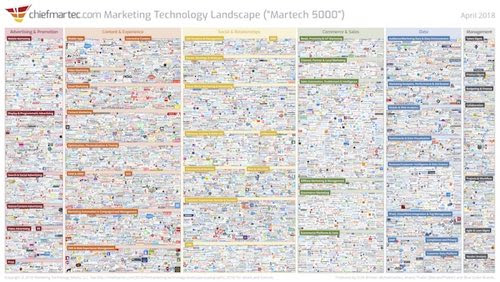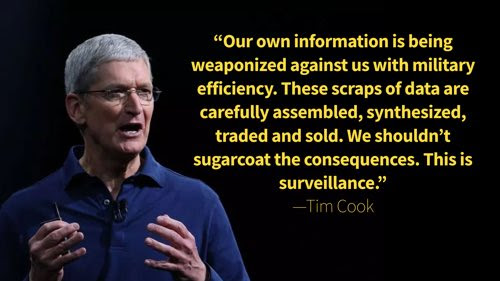According to Forrester, marketing tech investments will continue to grow in the coming years, surpassing the $100 billion mark in 2019. Some of this technology is tremendously powerful and useful. But it doesn’t come cheap. And the costs don’t end with the big numbers on the price tag, either. What are these hidden costs? And what can be done to turn them into benefits? Let’s take a moment to pause and reflect.
- We should start by saying that we’re not anti-martech. You’re receiving this message thanks to MailChimp and we couldn’t be happier about it (seriously, thanks for subscribing).
- But if you stop and look at what’s happening at the intersection of marketing and technology, the picture isn’t so rosy. For one thing, there are waaaaay too many products to choose from. You’ve seen this infographic, right?
- Another serious pitfall: digital tech and tactics are distracting many of us from strategy and other important marketing fundamentals. And have been for years now.
- Also, way too much martech falls short of the mark once it’s purchased due to internal capacity and capability shortfalls. A fast car isn’t very useful if no one knows how to drive it.
- And then there are all the side effects of our infatuation with tech-powered digital ads. You may not hear about it as much as you did a year or so ago, but ad fraud is still a major issue. Same with brand safety.
- Not to mention the fact that as advertisers we are now tangled up in rising societal concerns about data privacy and the misdeeds of what Apple’s Tim Cook recently christened the “data industrial complex”. Not the happiest of brand associations, surely.
- Here’s what really hurts … even with all this tech on our side, too many companies are, as Forrester recently put it, “struggling to create and sustain a human connection with their customers.” Last time we checked, that’s kind of what marketing is all about. So clearly we’re not getting optimal returns on the billions we’re investing in martech.
- Why? In most cases, the problem doesn’t originate in the tech in itself. Scott Brinker (the originator of the infographic above) sums it up this way: “Martech doesn’t automagically create great customer experiences any more than a food processor automagically makes you a great chef. It depends on how you wield it.”
- So how should marketing tech be wielded to minimize hidden costs and maximize return on investment? The answer isn’t complicated. Start with deep customer insights. Build on those to define a strong marketing strategy. Commit to following that strategy and serving those customers. Then (and only then) look for ways to do this better using technology.



